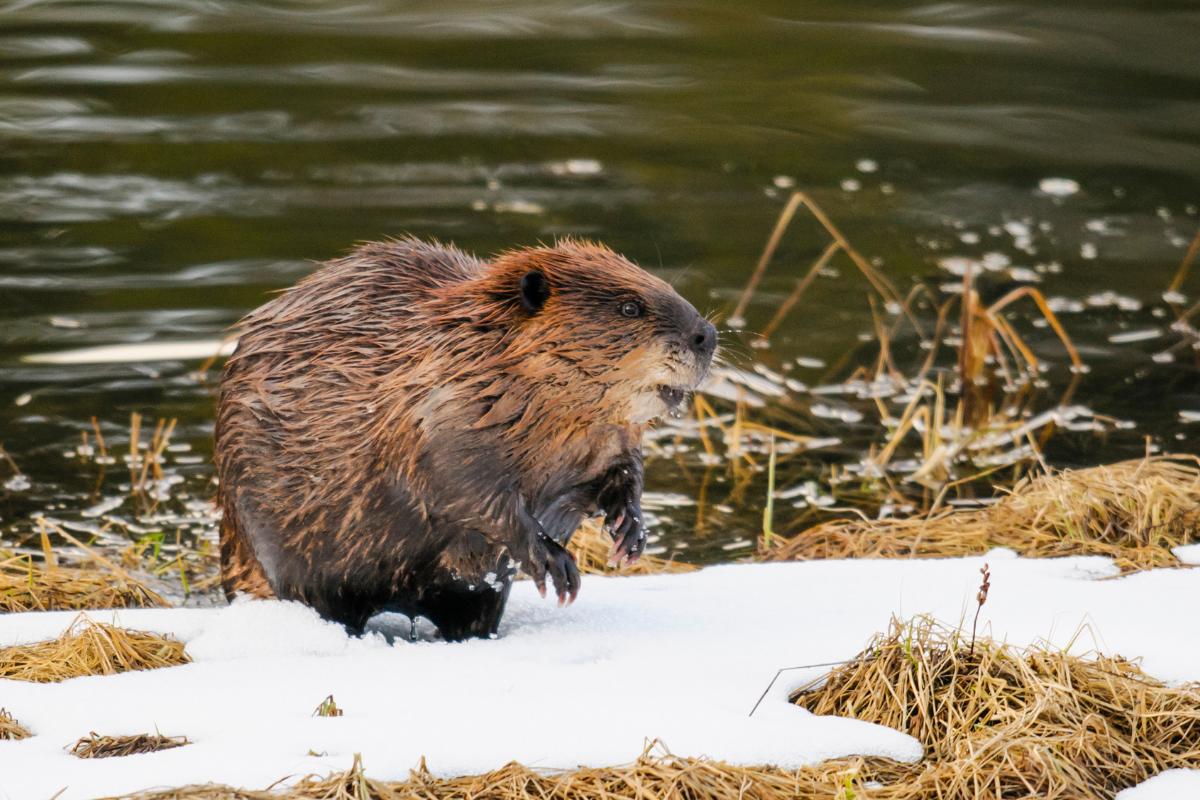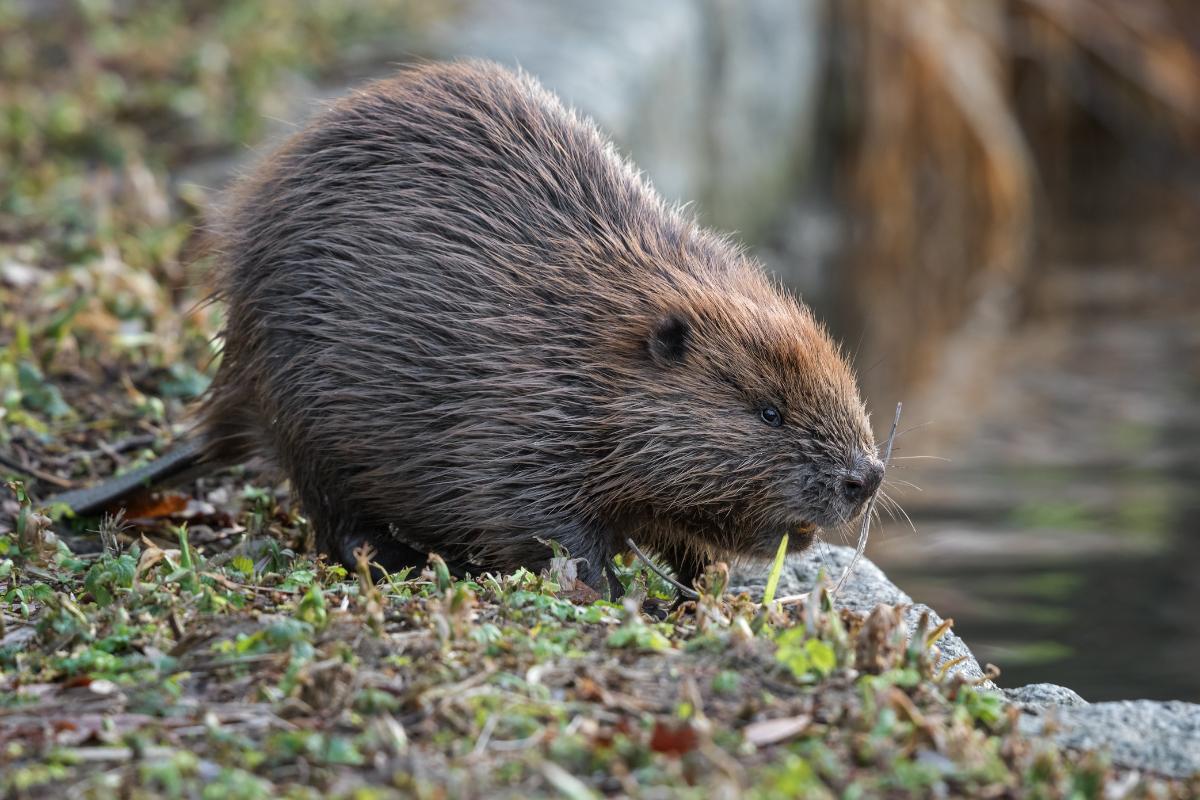Among the beaver species are the North American beaver ( Castor canadensis ) and the Eurasian beaver ( Castor fiber ). Beavers are semi-aquatic rodents of the Castoridae family, native to North America and Eurasia. Would you like to learn more about these fascinating animals?
There are two living species of beaver in the world: the North American beaver ( Castor canadensis ) and the Eurasian beaver ( Castor fiber ). The Kellogg's beaver ( Castor californicus ) lived between the Miocene and Pleistocene periods in western North America and is sadly extinct.
Beavers are semi-aquatic rodents of the Castoridae family characterized by their flat, oval tail covered with scales and their ability to build dams in rivers and streams using tree trunks. They live exclusively in the Northern Hemisphere, with the exception of some populations that have been introduced in Argentina and Chile and have become invasive alien species. Although C. canadensis and C. fiber are very similar, they have several differences, such as their chromosome number.

Distribution: The North American beaver is found throughout North America as far north as Mexico, with the exception of the Arctic tundra, the Florida peninsula, and the deserts of the southwestern United States. It has been deliberately introduced to Finland, certain regions of Russia, and Tierra del Fuego in Argentina. It has also spread to some islands in Chile, where it has become an invasive alien species and a threat to ecosystem conservation.
Habitat: Inhabits areas near lakes , ponds, and streams with access to adequate food and building resources. It lives in burrows on the banks of rivers and lakes, which measure about 4 m in diameter, 1.5 m high, and are always above the water level.
Behavior: It can build dams to retain water, create feeding grounds (especially important when terrestrial vegetation is difficult to access), provide safe shelter, facilitate movement, and facilitate the transport of woody material. It is nocturnal and gregarious. You might be interested in this post on Gregariousness: What It Is, Examples, and Characteristics .
Size and weight: It is considered the largest rodent in North America, reaching 70 to 80 centimeters in length and weighing up to 32 kilograms. Its body is robust and muscular.
Coat: It has a waterproof, dark reddish-brown coat that has the ability to prevent water from entering the body when it is in aquatic environments.
Diet: It is a herbivorous animal that feeds mainly on bark, aquatic vegetation, roots and shoots.
Reproduction: This occurs in early summer. Copulation can take place on land or in water. The gestation period lasts between 100 and 110 days, after which two to four young are born, weighing between 250 and 600 grams. Newborns have fur and partially open eyes. Although lactation lasts for about three months, the young begin consuming solid food a few weeks after birth. Sexual maturity is reached between one and a half and two years of age. At that point, the young are forced to leave the colony by their parents to seek out their own territory. In the wild, they can live up to 24 years, while in captivity their life expectancy can extend to 50 years.
Conservation: Although there are no major threats to the species in its range, it is hunted with traps for its fur (fur industry).

Distribution: In the past, the Eurasian beaver ( Castor fiber ) was widespread across Europe. However, overhunting has drastically reduced its population, leaving it isolated in some regions of the Rhône (France), the Elbe (Germany), southern Norway, the Neman River, the Dnieper Basin (Belarus), and the Voronezh Basin (Russia). However, thanks to conservation and reintroduction measures, the Eurasian beaver has returned to much of its former range. Currently, there are several subpopulations extending from Spain and France through Central and Eastern Europe to Russia. Find out if there are beavers in Spain.
Habitat: Like the North American beaver, it is adapted to a semi-aquatic lifestyle, utilizing a variety of freshwater environments such as rivers, streams, ditches, lakes, and swamps . It typically prefers freshwater habitats surrounded by forest or brush , although it can also be found in agricultural fields or even in suburban and urban areas. It can build dams to retain water, create feeding areas (especially important where terrestrial vegetation is difficult to access), provide safe shelter, facilitate movement, and facilitate the transport of woody material. It hides and rests in burrows.
Behavior: They also create dams, modifying their environment, creating safe havens and facilitating access to food. They are also nocturnal and live in family groups consisting of a pair of adults, young, and sub-adults.
Size and weight: This is the largest beaver species, weighing between 15 and 20 kilograms, rarely up to 40 kg, and measuring between 73 centimeters and 1.35 meters. Don't miss this article on the largest rodents in the world .
Coat: Similar to that of the North American beaver with two layers, a soft and dense dark gray undercoat, and an outer coat of stiff, long, reddish-brown hairs.
Diet: Like C. canadensis , it is herbivorous. It feeds on aquatic and terrestrial herbaceous vegetation and broad-leaved woody vegetation.
Reproduction: The mating season begins in late winter, and copulation generally takes place underwater. The gestation period lasts about 100 days, giving birth to between two and five young, which are born with their eyes open and covered in fur. In the first weeks of life, they remain within the burrow with their mother and the previous season's young. Once they reach sexual maturity, which usually occurs after two years of age, they usually leave the colony and establish their own territory.
Conservation: The decline in their populations is primarily due to overhunting for fur, meat, and castoreum (a scent gland secretion), coupled with the loss of wetlands.
IUCN (2024). The IUCN Red List of Threatened Species. Available at: https://www.iucnredlist.org
Zumeta, BJ (s/f). Castor fiber (Rodentia, Castoridae). Ebro pineapple fauna and its region. Mammalia. Available at: https://monteriza.aranzadi.eus/wp-content/uploads/mamiferos/448.castor-fiber.pdf
animal tags: beavers
We created this article in conjunction with AI technology, then made sure it was fact-checked and edited by a Animals Top editor.